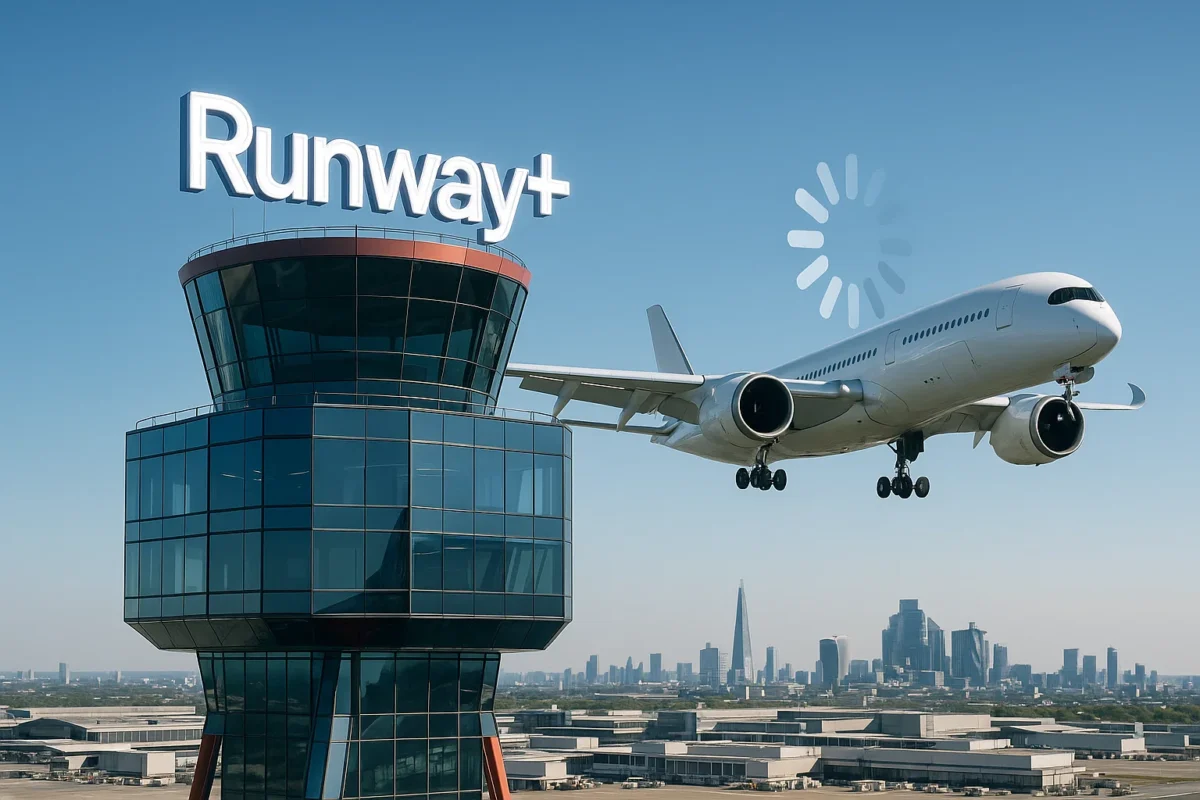LONDON — Heathrow Airport has submitted its shovel-ready plans for a third runway and a new terminal. They also plan to slide the M25 ring road underground, treating England’s busiest motorway like a welcome mat. Heathrow has bundled the total price tag, estimated between £21 billion and £49 billion, into Runway+. This is the world’s first subscription service that lets airlines choose how often they can land.
In true streaming-era fashion, Heathrow’s executives promise that the basic service will stay “affordable.” However, the last affordable item at the airport was a £6 bottle of water in 2012. CEO Thomas Woldbye explained to reporters while standing on a holographic pie chart: “It has never been more urgent to expand Heathrow. Our shareholders’ patience is circling in a holding pattern.” Passengers, airlines, and suburban gardeners under the flight path have options. They can choose from three tiers: Basic, Standard, and Platinum. Environmentally conscious travelers can opt for the optional “tree GIF offset” to feel really smug while the kerosene fumes gently exfoliate their conscience.
Welcome to Runway+ Pick Your Subscription, Pick Your Altitude
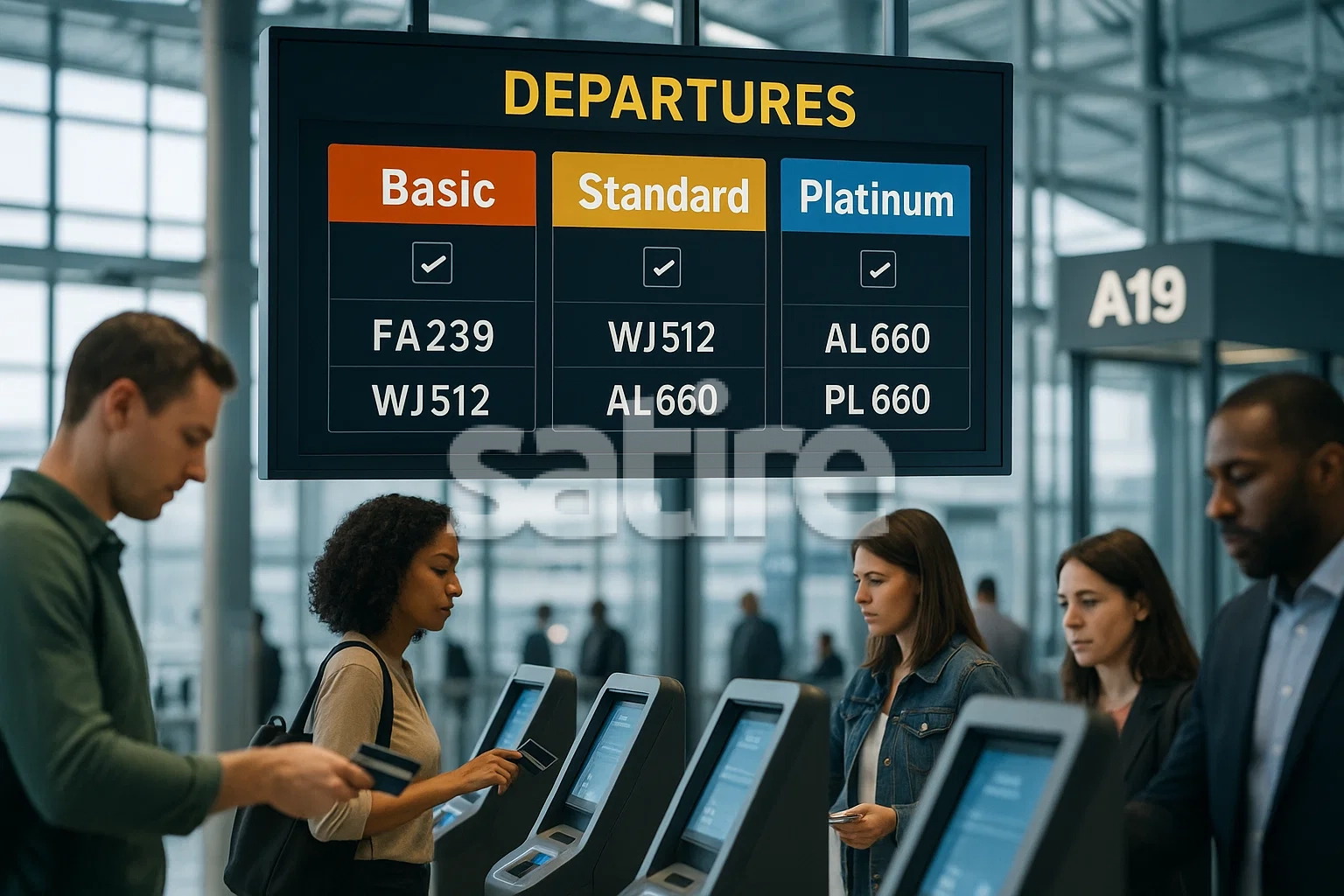
Landing fees used to depend on aircraft weight and noise footprint. Now, Runway+ replaces those metrics with a monthly debit and a promise not to share your password with rival carriers. The Basic tier grants one landing per month. It includes a 720p touchdown and a compulsory three-minute ad break mid-flare. Standard offers 1080p approaches, one free go-around, and the right to choose your preferred end of the runway (north or “other north”). Platinum delivers glorious 4K landings, unlimited touch-and-goes, and a commemorative scone the width of an A321 seatbelt buckle.
Pricing remains a secret. However, a leaked internal slide deck suggests the airport will also demand a £12 “Content Delivery Fee” for every passenger watching the runway out the window. British Airways CEO Sean Doyle has warned that if Heathrow continues raising charges, “the runway is going to be empty.” The Guardian found this was a statement shareholders promptly monetised by offering an Empty Runway NFT for £199.
Ad-Supported Touchdowns: EasyJet’s 30-Second Lidl Read-Thru
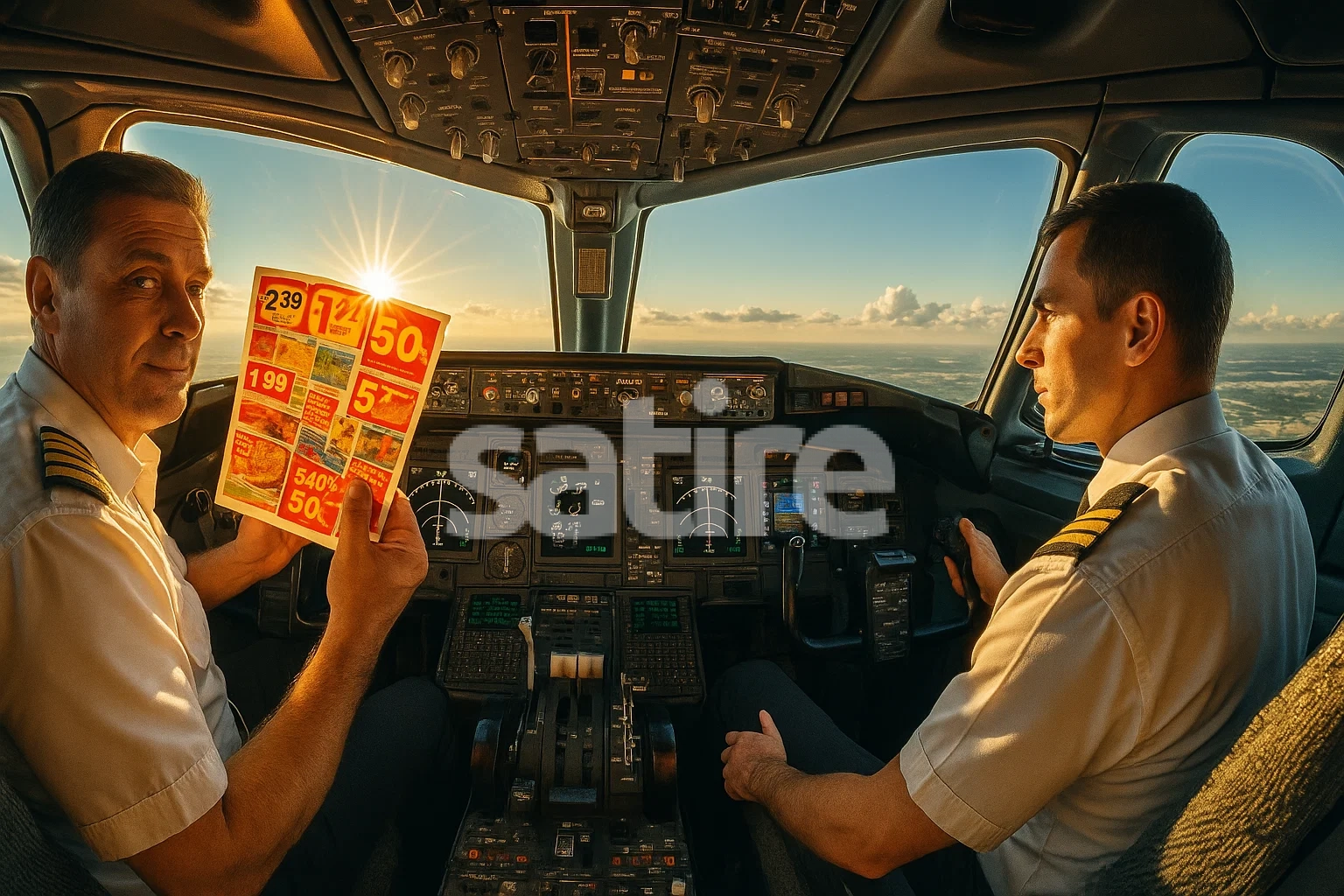
Budget airline EasyJet quickly adopted the Ad-Supported Basic tier. Pilots must recite sponsored deals moments before the wheels touch down. Picture it: “Ladies and gentlemen, today’s touchdown is brought to you by Lidl, where runway-fresh baguettes start at 79p!” The move aligns perfectly with the UK’s political climate. It encourages free markets, louder markets, and low-cost markets yelling into a PA system during final approach.
Critics claim an advert-laden landing could distract flight crews from, you know, flying the plane. Heathrow counters that modern cockpits are already 90% automated and 10% PowerPoint. Swapping out approach briefings for discount vegetable announcements barely moves the needle. Meanwhile, Ryanair is reportedly negotiating a rival package. It would require passengers to watch a 15-second unskippable video on their phone before the seat-belt sign goes off. The CAA has labeled this policy “innovative” and “somehow exhausting.”
Platinum Tier Perks: Unlimited Touch-and-Goes, Free Tiny Scone
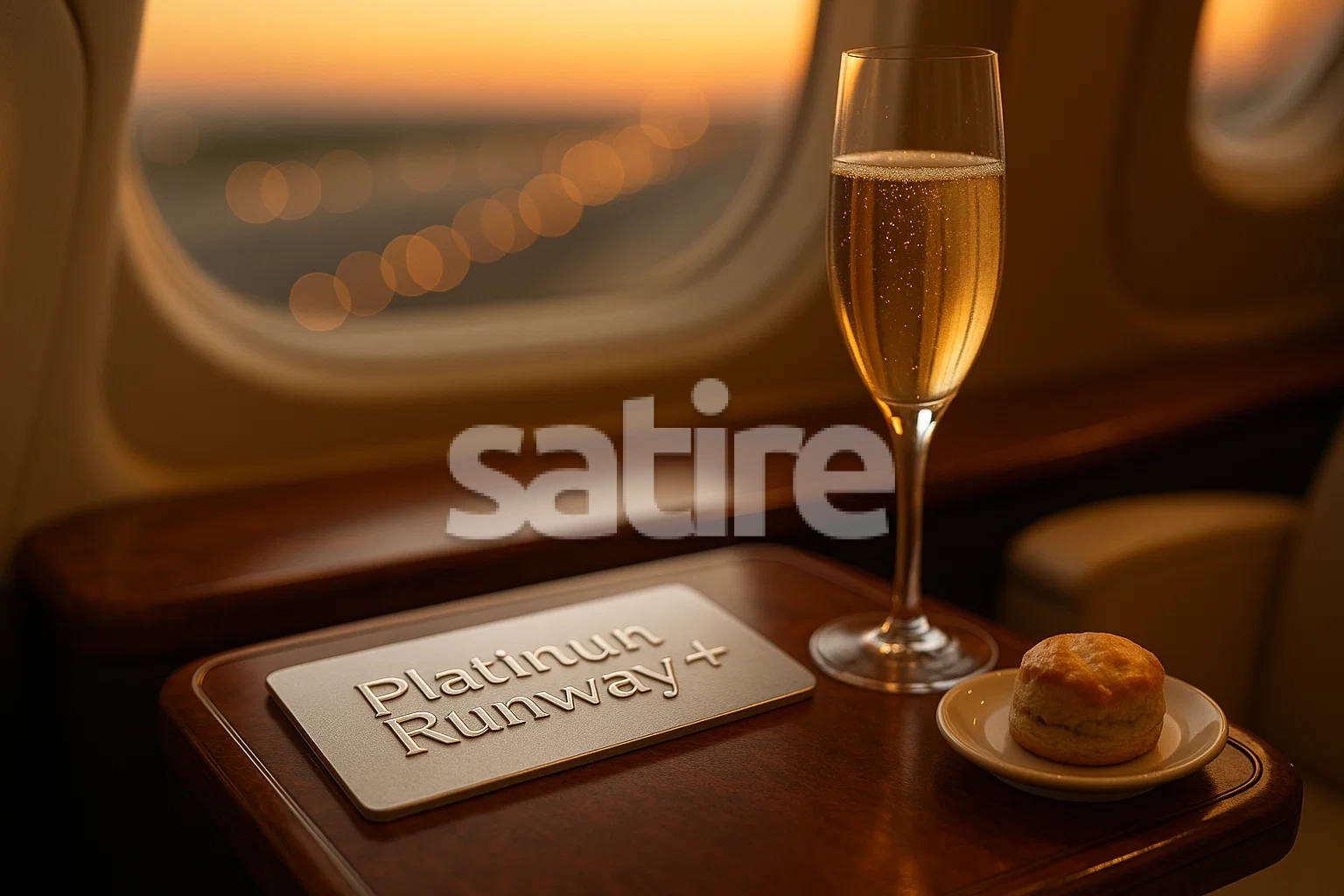
Business-jet owners and the occasional oligarch fleeing a hostile takeover can treat themselves to Platinum, unlocking unlimited landings. Heathrow describes this as “all-you-can-land luxury.” Hard-core avgeeks may remember the old slot system that rationed arrivals like wartime sugar. Now, with enough direct debit headroom, you can bounce down Runway 27L as often as you bounce your Rent-a-Chef top-up card.
Perks include access to Terminal 5X’s Scone & Drone Lounge. Here, pastry chefs bake scones so tiny they technically qualify as microplastics. A complementary drone follows each Platinum jet along the taxiway, live-streaming the pilot’s smirk to shareholders stuck on Zoom. Heathrow has promised these lavish extras won’t raise environmental concerns. Their sustainability officer pointed out in a Reuters interview, “You can’t put a price on prestige, unless it’s £12,000 an hour, in which case we definitely did.”
Eco-Add-On: Stream One Tree GIF, Offset Your Jet’s CO₂

For the token price of £1 per sector, passengers can activate EcoStream, Heathrow’s breakthrough carbon-offset product. It plays an endlessly looping sapling GIF on your seat-back screen. According to the airport’s ESG brochure, printed on delightfully heavy gloss paper, the GIF “creates an immediate optical illusion of reforestation.” Analysts believe this is just misleading enough to pass muster.
When environmental groups pointed out that the new runway could pump out 4.4 million extra tonnes of CO₂ yearly, Heathrow promised to double the loop length and add a chirping bird soundtrack. Critics remain skeptical. “Watching a pixelated oak doesn’t reverse climate change,” argued a Greenpeace spokesperson. “But at least it distracts you while you’re stuck at the hold-short line for an hour.”
NIMBY Noise-Cancellation Mode, For Residents, Not Engines
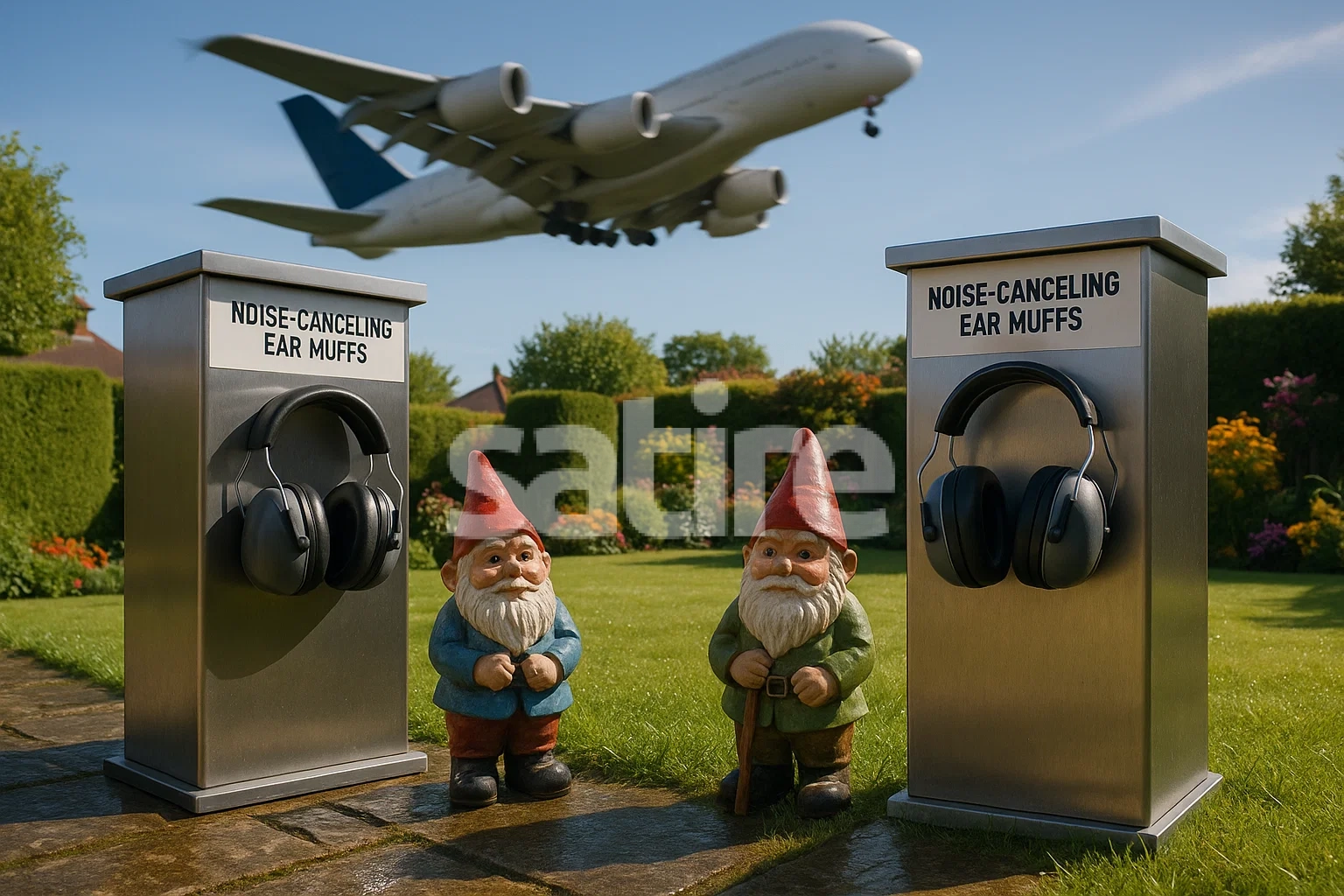
Local opposition has dogged Heathrow since the first Douglas DC-3 dripped oil on a Chiswick rosebush. The third-runway saga is no different. This time, instead of reducing noise, the airport is trialing Noise-Cancellation Mode. A kiosk network distributes Bluetooth ear defenders to villagers every time an aircraft passes overhead. The devices are emblazoned with Heathrow’s smiling-runway logo and a QR code linking to a Runway+ free-trial page. This marketing synergy makes the roar almost tolerable.
Residents of Harmondsworth and Sipson (whose cottages sit atop the proposed tarmac) have been offered two exciting relocation options: a £5 WHSmith voucher or a seat on the inaugural demolition-spectator grandstand. Critics call it a raw deal. Heathrow counters that the voucher can technically purchase earplugs, thereby solving noise pollution through retail therapy. If disputes continue, management hints it may simply rebrand affected suburbs as “Terminal 9 Heritage Experience Zones” and call it a day.
Hidden Fees & Runway Loot Boxes: Because Transparency Never Took Off
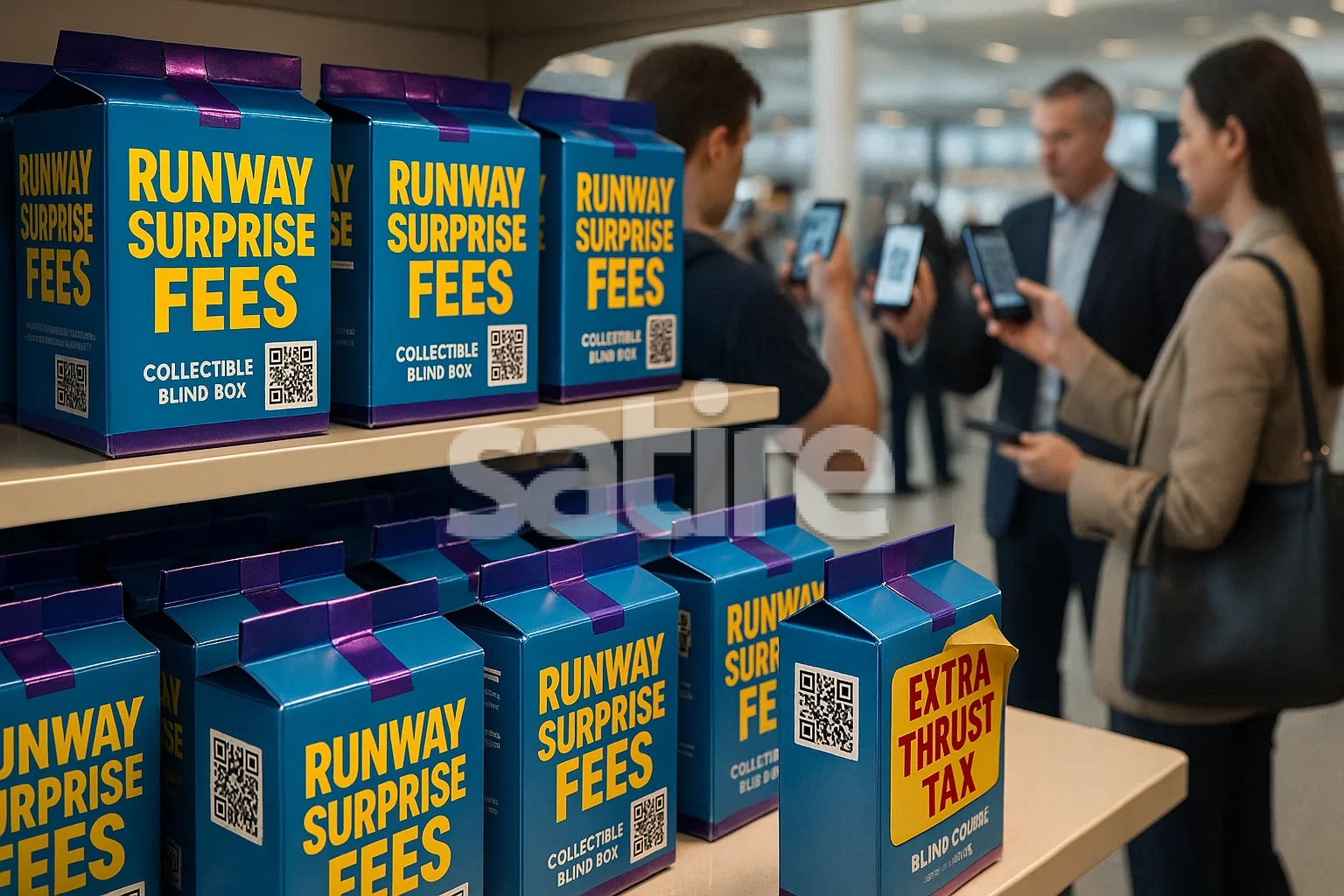
The pièce de résistance of Runway+ is its cutting-edge monetisation engine. It introduces Runway Loot Boxes, mystery charges that appear after touchdown. For a modest wager (say, your mortgage payment), airlines can spin the Fee Wheel and hope to avoid the dreaded M25 Tunnel Toll Crit. This penalty triggers every time your landing gear crosses the subterranean bypass that cost £1.5 billion to dig.
Transparency advocates argue this is simply a loot-box tax dressed in winglets. Heathrow’s CFO disagrees. “Gamification drives engagement,” she explained while unveiling a platinum-plated debit reader shaped like a 747 nose. Early testers swear it’s addictive. “I landed for £4 yesterday; today it was £400,000,” boasted a corporate pilot for a Newcastle-based mining magnate. “That’s dynamic pricing, baby.” Meanwhile, rival Arora Group has proposed a cheaper **2,800 m** runway that skips the loot boxes entirely, which is obviously unthinkable.
Binge-Watching Landings Is the Future, If Your Wallet Can Stay Airborne
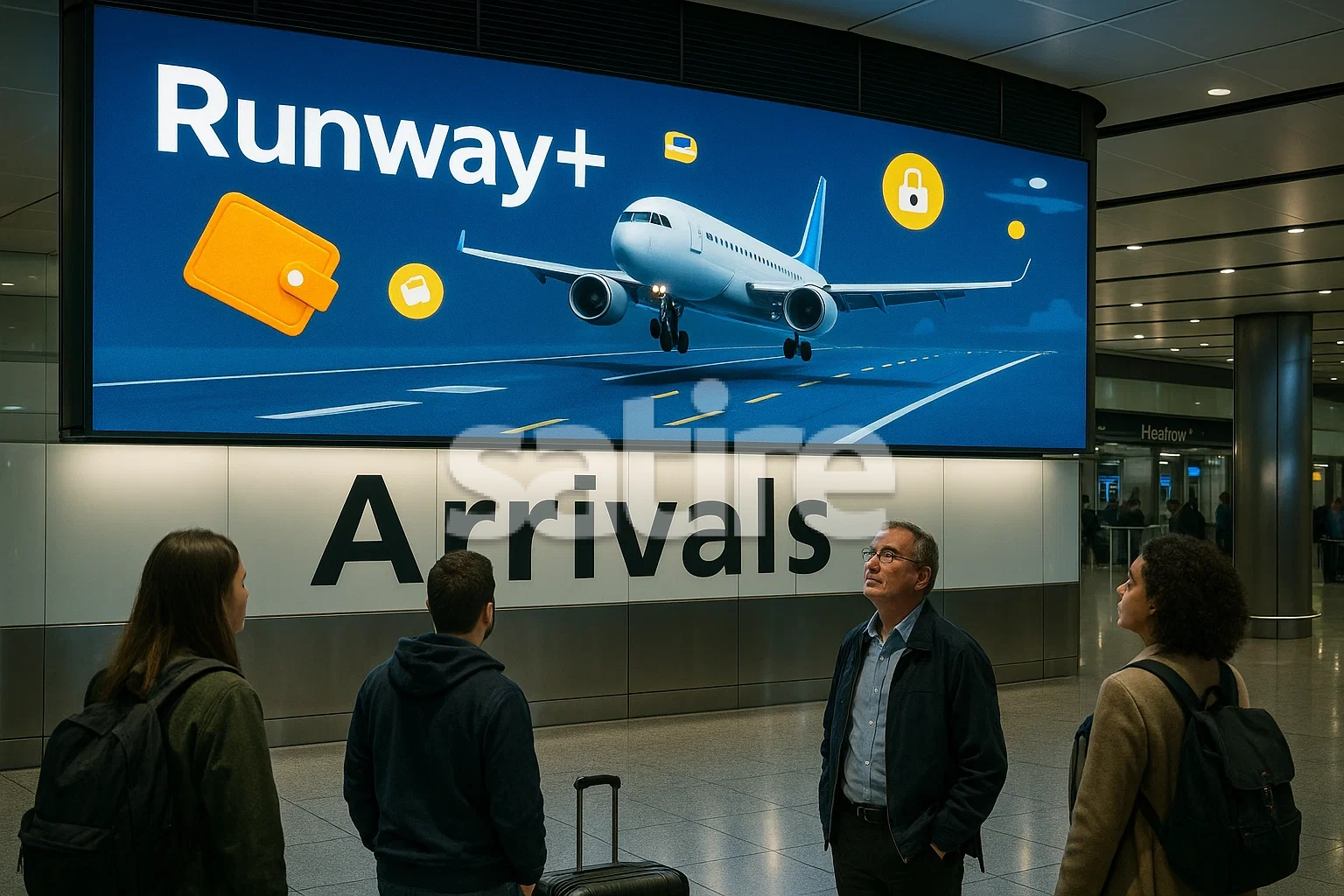
Parliament is quietly updating planning rules to hurry construction through by 2035. The Labour government touts post-pandemic growth. Runway+ looks poised to hit the tarmac sooner than a pilot skimming LinkedIn for cabin-crew discount codes. Whether the plan truly delivers “streaming-quality infrastructure” or just bilks passengers at 35,000 feet remains to be seen. One truth is crystal clear: Heathrow will finally let you pay for the privilege of arriving.
Now, if you’ll excuse us, our free tier only lets us write 1,000 words a day. For the director’s cut, including a time-lapse of MPs bulldozing a 15th-century barn, upgrade to Takeoff Nap Premium today.
Ready for more aviation absurdity? Taxi back to The Takeoff Nap for your daily dose of satirical turbulence.

